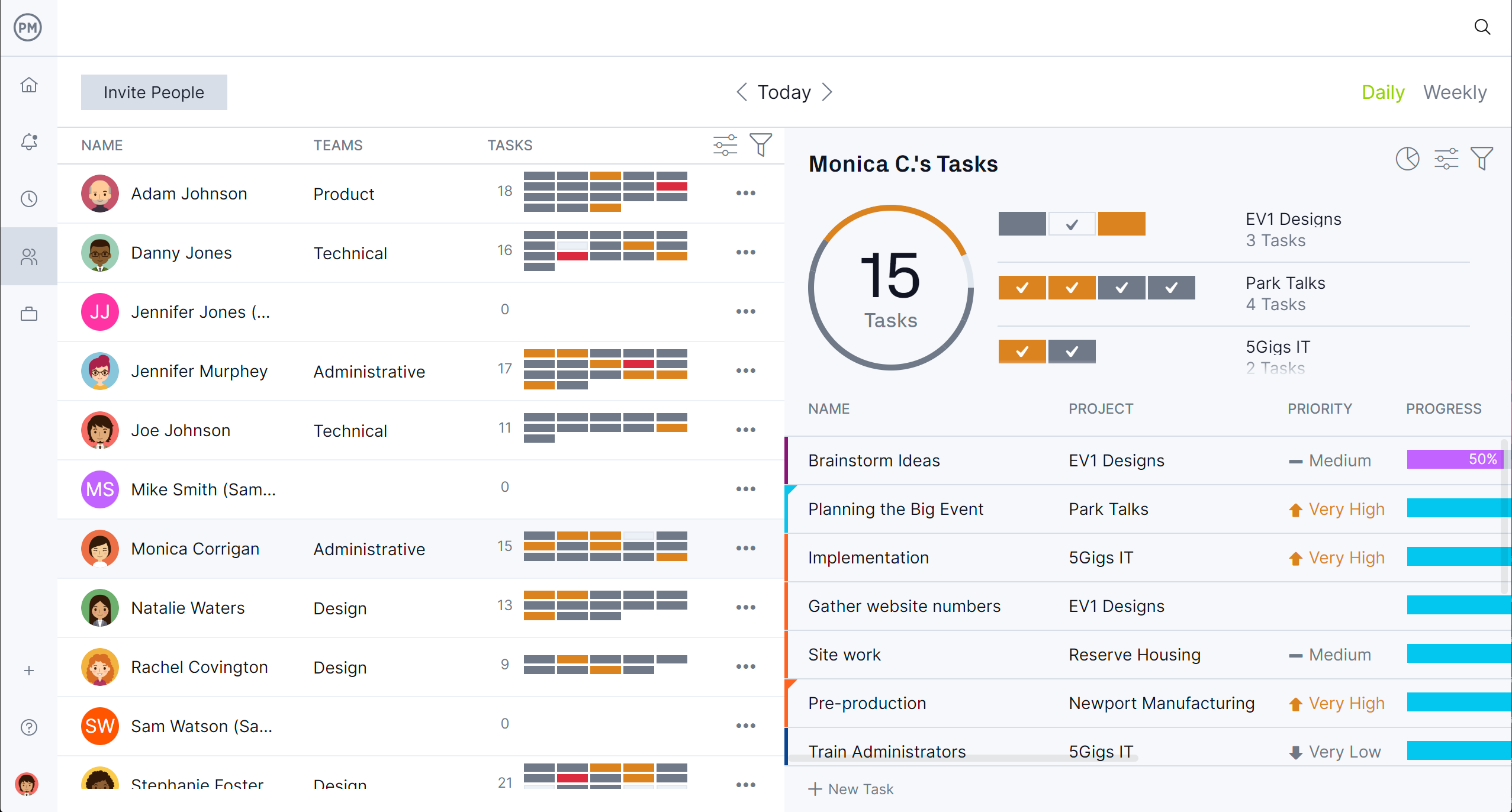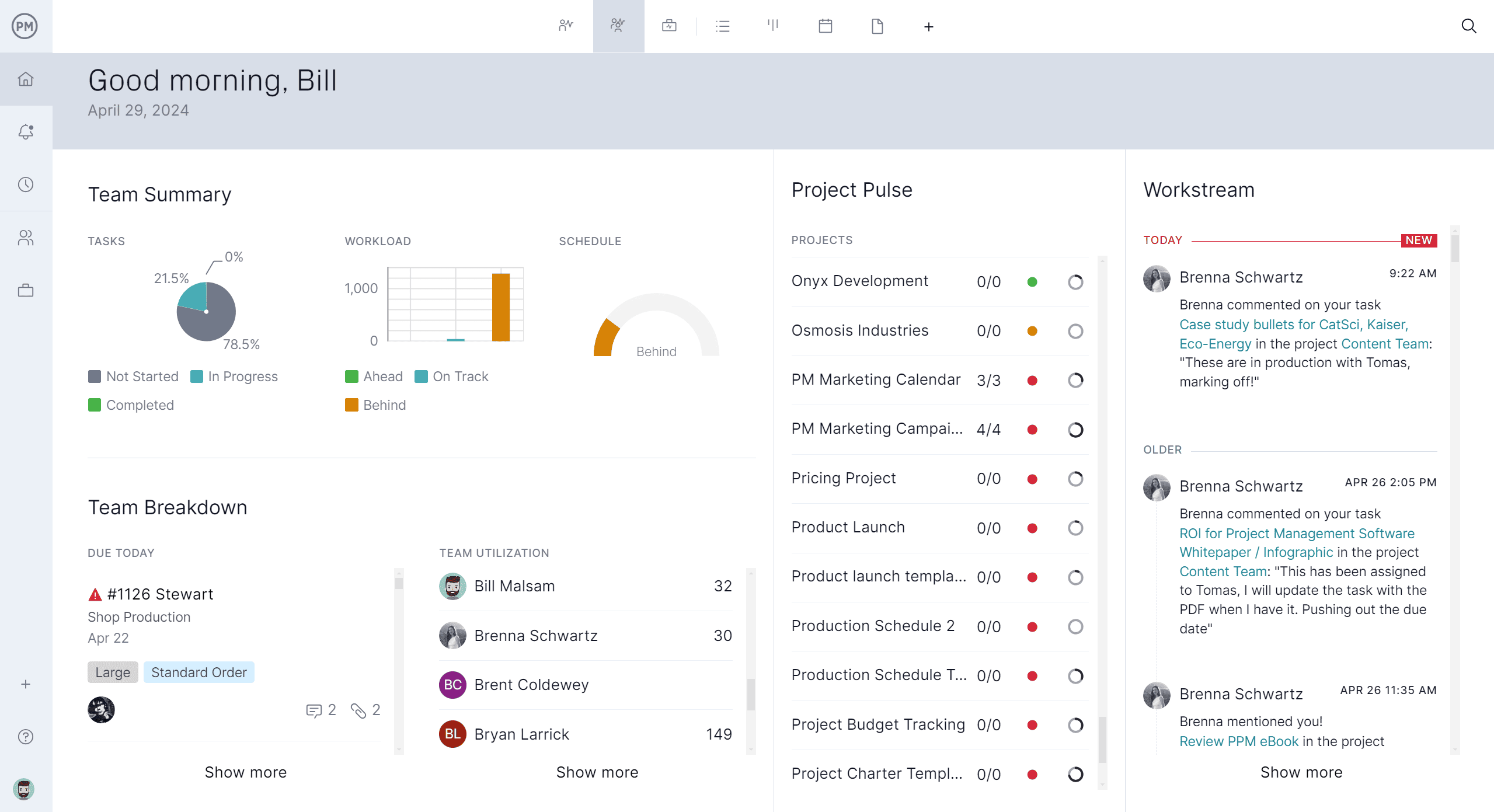Managing stakeholders is one of the most important aspects of successful project delivery. Regardless of a project’s size or scope, how well a project manager navigates relationships with clients, team members and executive sponsors can determine whether the project meets expectations or falls short. Developing strong stakeholder management skills is essential to keeping communication open, aligning expectations and maintaining trust across the project lifecycle.
Stakeholder management skills go beyond emails and status meetings. They include emotional intelligence, strategic thinking and the ability to negotiate through complexity and change. Whether you’re managing a single stakeholder or an entire board, sharpening these skills will help you foster better relationships, avoid surprises and lead more confidently. In the sections that follow, we’ll break down the ten most important stakeholder management skills every project manager should develop.
What Is a Stakeholder Management Skill?
Stakeholder management skills refer to a project manager’s ability to identify, communicate with and influence stakeholders throughout the life of a project. These skills include communication, conflict resolution, expectation management and relationship building. Strong stakeholder management skills help ensure everyone involved understands the project’s objectives, timelines and constraints. When project managers can anticipate needs, respond to concerns and keep stakeholders engaged, projects are more likely to succeed.
These skills become increasingly important as projects grow more complex and involve a broader range of internal and external participants. From aligning goals across departments to handling client feedback, stakeholder management skills are what keep everyone connected to the project’s purpose. They’re also vital for maintaining transparency and trust when projects shift direction or encounter delays.
Project management software helps support stakeholders by providing a centralized platform where project information is always accessible and up to date. It enables real-time communication, document sharing and status tracking, which keeps stakeholders in the loop without the need for constant back-and-forth updates. Automated alerts, dashboards and visual timelines also reduce confusion and ensure everyone stays aligned on project goals and expectations.
ProjectManager’s Gantt chart is particularly valuable for stakeholder management. It provides a dynamic visual timeline that shows tasks, dependencies and milestones in one place, making it easy for stakeholders to see how the project is progressing. With drag-and-drop functionality and real-time updates, project managers can quickly adjust plans based on stakeholder input. The Gantt view also allows users to filter and customize what’s displayed, so each stakeholder sees the details most relevant to them, improving clarity and engagement across the board. Get started with ProjectManager today for free
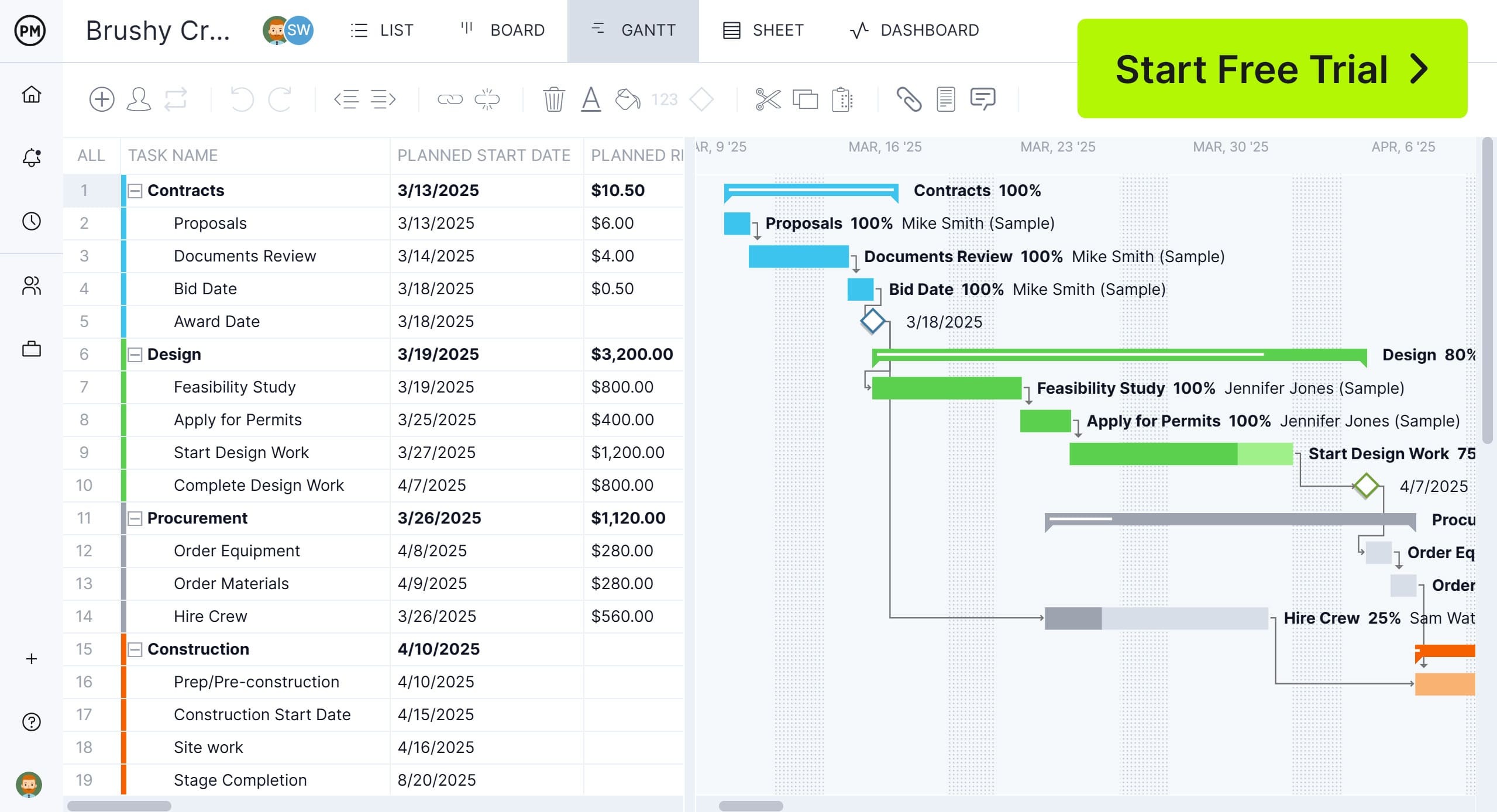

What Are the Most Important Stakeholder Management Skills?
Stakeholder management skills are critical for any project manager aiming to deliver successful outcomes. These skills go beyond simple communication and involve strategic thinking, planning and ongoing engagement. By understanding the needs, influence and concerns of stakeholders, project managers can minimize risks, secure support and ensure smoother project execution. Each skill listed below plays a vital role in maintaining positive stakeholder relationships and aligning project outcomes with organizational goals.
1. Stakeholder Identification
Stakeholder identification is the foundation of stakeholder management skills. It involves recognizing everyone who has an interest in or can affect the project. This includes internal team members, leadership, clients, end-users, vendors and regulatory bodies. Early identification ensures that key voices are heard from the beginning and helps prevent overlooked concerns from derailing progress later on. A project manager must be thorough and inclusive in this step to build a clear picture of who needs to be engaged and informed throughout the project.
2. Stakeholder Mapping
Once stakeholders are identified, stakeholder mapping helps categorize them based on their influence and interest. This allows project managers to prioritize engagement efforts and allocate communication resources appropriately. High-influence high-interest stakeholders require more frequent and personalized updates, while those with lower stakes may be updated periodically. Effective mapping creates a visual representation of stakeholder dynamics and guides targeted engagement strategies to ensure that no important voices are left out.
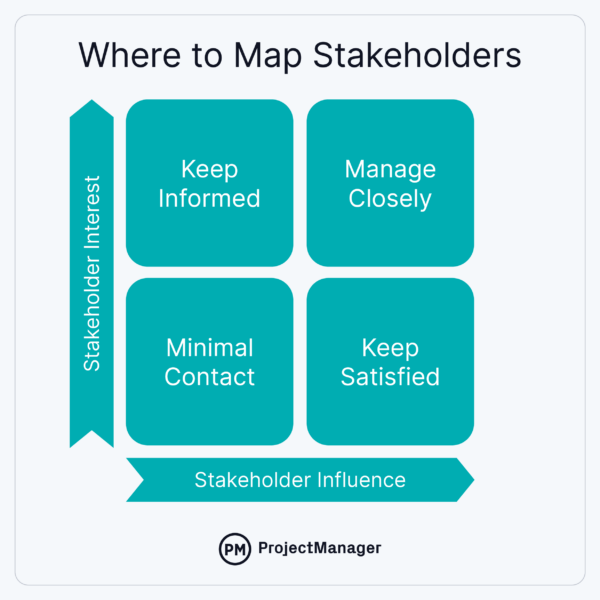

3. Stakeholder Analysis
Stakeholder analysis dives deeper into understanding individual and group motivations, concerns, expectations and potential resistance. It helps identify who supports or opposes the project and why. This insight enables project managers to tailor engagement plans, mitigate risks and strengthen alliances. A well-executed analysis helps anticipate stakeholder behavior, informs decision-making and lays the groundwork for effective communication and expectation management throughout the project lifecycle.
Related: 13 Free Stakeholder Management Templates for Excel & Word
4. Stakeholder Communication and Reporting
Clear and consistent communication is a cornerstone of effective stakeholder management skills. This includes status updates, meeting summaries, milestone reports and responding to questions promptly. Good communication fosters trust, manages expectations and helps stakeholders feel involved in the process. Project managers must tailor communication styles and channels to suit the preferences of different stakeholders, ensuring the information is always relevant, timely and easy to understand.
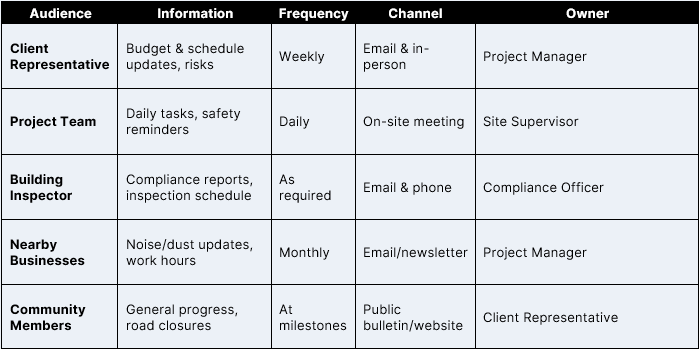

5. Coordination of Stakeholder Engagement Activities
Coordinating engagement activities ensures that stakeholder involvement is not just a formality but a meaningful part of project execution. This might include scheduling workshops, arranging one-on-one meetings, gathering feedback and incorporating input into project decisions.
Effective coordination keeps stakeholders active, promotes collaboration and helps maintain alignment between project goals and stakeholder interests. This skill requires organization, attention to detail and the ability to balance multiple stakeholder needs simultaneously.
6. Stakeholder Expectations Management
Managing expectations is crucial to prevent dissatisfaction and project delays. It involves setting realistic goals, clearly communicating limitations and addressing concerns promptly. Project managers must ensure that stakeholders understand what is possible within scope, time and budget constraints. Regular updates, milestone tracking and transparency are key tactics. When expectations are managed effectively, stakeholders are more likely to remain supportive even if changes or challenges arise.
7. Development of a Stakeholder Management Plan
A stakeholder management plan outlines strategies for communication, engagement and conflict resolution. It serves as a guide to ensure consistent and thoughtful interaction with stakeholders throughout the project. This plan typically includes stakeholder roles, communication methods, engagement frequency and escalation procedures. Developing a comprehensive plan ensures that no engagement effort is left to chance and that all stakeholder interactions are purposeful and aligned with project objectives.
8. Liaison Between Project Stakeholders and Project Management Team
Acting as a liaison involves bridging the gap between stakeholders and the project team. Project managers must accurately convey stakeholder feedback, concerns and expectations to team members while also translating technical updates and progress into stakeholder-friendly language. This dual role builds trust, improves collaboration and ensures that all voices are considered during decision-making. It also reduces the risk of miscommunication and project misalignment.
9. Understanding of Business Strategic Planning
A strong grasp of business strategic planning allows project managers to align stakeholder interests with broader organizational goals. This understanding helps justify project decisions, gain executive support and demonstrate the value of stakeholder involvement. By connecting project outcomes to long-term business strategies, managers can better position their work within the larger company vision, enhancing credibility and reinforcing stakeholder buy-in.
10. Establishment and Monitoring of Key Performance Indicators
Establishing and tracking KPIs ensures that stakeholder expectations are being met and that the project remains on course. KPIs related to budget, timeline, quality and stakeholder satisfaction provide measurable data that supports informed decision-making. Regularly reviewing these metrics with stakeholders reinforces transparency and helps identify issues early. It also provides a structured way to celebrate progress and show the tangible value of stakeholder engagement.
Free Stakeholder Management Templates
ProjectManager offers a wide range of free project management templates that streamline managing projects. Below are a few tools that support project managers in identifying, analyzing and engaging stakeholders more effectively across all phases of a project.
Stakeholder Analysis Template
Download this free stakeholder analysis template to examine the needs, interests and influence of stakeholders. It supports prioritization and allows you to document stakeholder expectations, which can then be factored into the overall project strategy. This template plays a central role in building a successful stakeholder management plan.
Stakeholder Map Template
Use this free visual tool to enable you to place stakeholders on a grid based on their level of interest and influence. The stakeholder map template makes it easy to determine how frequently to engage each stakeholder and what type of communication is most appropriate. It ensures that project communication efforts are targeted and efficient.
Stakeholder Register Template
This free stakeholder register template serves as a centralized document for recording essential details about each stakeholder. This includes names, roles, contact information and their level of involvement. It provides quick access to key information and helps maintain organized and consistent engagement throughout the project.
How ProjectManager Helps With Stakeholder Management
ProjectManager is a more powerful solution than using standalone templates. While templates offer a solid foundation, our online software gives project managers real-time tools to manage stakeholder relationships across the entire lifecycle of a project.
One of the most effective features is the ability to switch between multiple project views—including Gantt charts, task lists, kanban boards and calendars. This flexibility ensures that stakeholders can engage with the project in the format they prefer. Visualizing data differently helps cater to different communication styles and makes collaboration more inclusive and efficient.
Optimize Team Resources and Engagement
Our resource management tools let you assign tasks based on team availability and skill level. Stakeholders can see who’s doing what and when through color-coded workload charts and team pages. This improves transparency and avoids overburdening key personnel, which helps build trust with stakeholders. With a centralized platform, resource conflicts can be resolved quickly and adjustments made on the fly. These features support consistent delivery, making it easier to align with stakeholder expectations and project objectives.
Track Progress With Real-Time Dashboards and Reporting
Use tracking capabilities for project managers and stakeholders to get instant access to live data. Our software offers real-time dashboards that show progress on tasks, milestones and budgets. Stakeholders can view customizable reports to get the exact information they need without waiting for manual updates.
Secure timesheets ensure that time tracking is accurate and audit-ready. This level of insight promotes accountability and allows stakeholders to make informed decisions faster, increasing overall confidence in the project’s success.
Related Stakeholder Management Content
Stakeholder management skills are important for project managers and their teams. Therefore, readers will benefit from getting even deeper into the topic. Follow the links below for more free templates, learn about stakeholder mapping, how to make a stakeholder plan and more.
ProjectManager is online project and portfolio management software that connects teams whether they’re in the office or out in the field. They can share files, comment at the task level and stay updated with email and in-app notifications. Join teams at Avis, Nestle and Siemens who are using our software to deliver successful projects. Get started at ProjectManager today for free.
